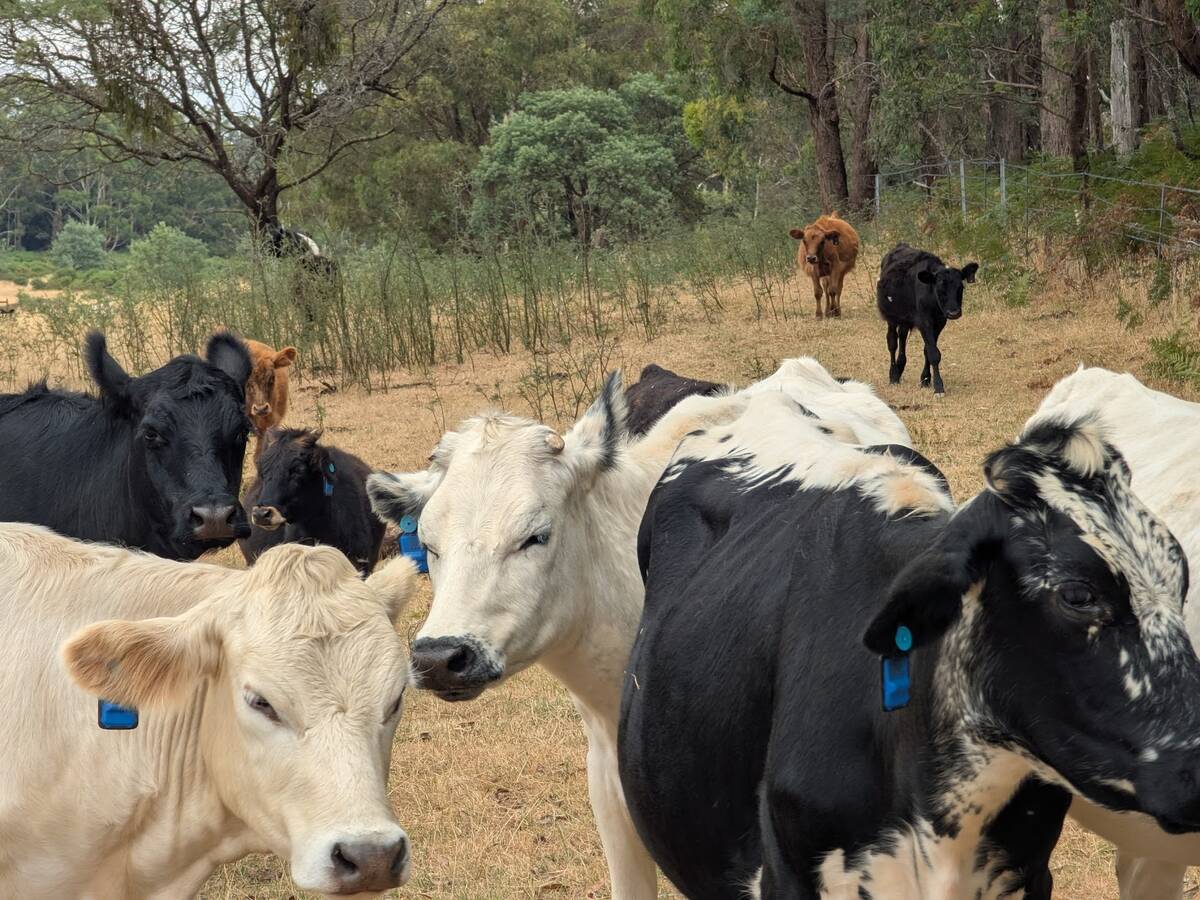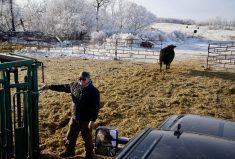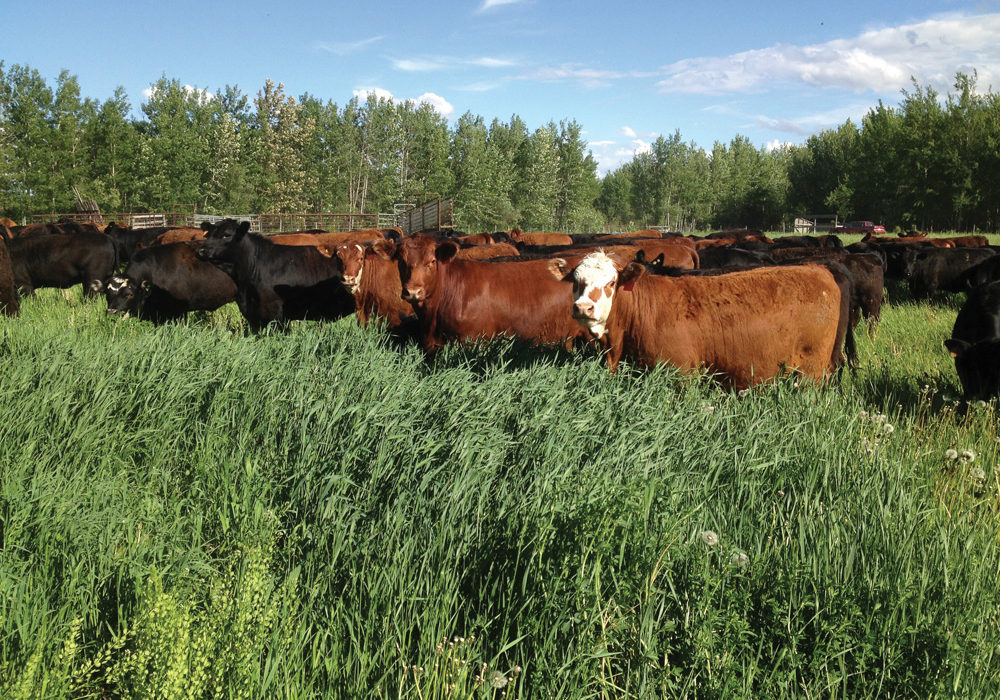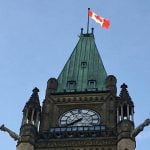British Columbia is the epitome of “land” with all its different landscapes — the rolling hills that turn into snow-capped mountains, the rainforests in the south and boreal forests in the north, the salty beaches on the coast and prairie near the Alberta border.
This land is important to so many of the people who live here, as well; the ranchers who raise their cattle under the shadow of a mountain, and the Indigenous peoples who have lived on this land for generations.
Now, the British Columbia Cattlemen’s Association (BCCA) is working with Indigenous communities to bring the two groups together.
Read Also

Australian company brings ear-tag tech to Canadian pastures
With Smart Paddock, beef farmers and ranchers can track their cattle through GPS technology
BCCA gets to work
John Anderson is a second-generation rancher in the Merritt area. The part of B.C. where he ranches has five Indigenous bands in the area. As a neighbour to Indigenous communities and chair of the Indigenous relations committee with the BCCA, having a strong and comfortable relationship with Indigenous communities and ranches is important.
“Why is that important? This is the reason: Because we are rural people. We both share a rural landscape, we grow up in a small rural community. And we need to support each other,” Anderson says.
The BCCA has two committees that handle relationships with Indigenous communities — the Indigenous affairs committee and the Indigenous relations committee.
The Indigenous affairs committee deals more specifically with things that are happening between the government and Indigenous bands in B.C., such as land claims settlements. The Indigenous relations committee, which Anderson chairs, focuses more on building relationships with Indigenous communities.
“The goal of that committee, quite simply put, is to build a stronger and better-communicated relationship with our First Nations neighbours,” Anderson says. “And so that sounds pretty simple. But it’s a little more challenging.”
According to an update released in August 2022, the Indigenous relations committee has focused on understanding Indigenous perspectives and learning about the history and culture of the Indigenous peoples in B.C. The committee has also been working on learning about the issues and challenges facing their neighbouring communities.
One thing Anderson says they’ve done is create a network of people in B.C.
“Our province is represented by seven committee members that represent pretty much every geographical part of British Columbia,” he says. “And each has a number of different First Nations and they often have a variation of the same issue. Our goal is to support First Nations people that are already working in the industry, because we have a lot of ranchers that are band members. We want to be able to support them more fully in the future.”
Treaty history
In many ways, early relationships between European and Indigenous communities were co-operative, notes How did we get here? A concise, unvarnished account of the history of the relationship between Indigenous Peoples and Canada, published by the Canadian Senate in 2019. Eastern Canadian First Nations signed commercial compacts with the Crown, as well as early treaties. First Nations were seen as allies and trading partners, and early treaties “did not attempt to extinguish Aboriginal title to the land,” notes the Senate report.
However, over time, the Crown grew concerned about conflict as Europeans began settling in First Nations territories. As well, the original commercial compacts and treaties didn’t include a process for accessing Indigenous lands. In 1763, the Crown issued the Royal Proclamation, which simultaneously declared that negotiations with First Nations communities would be on a nation-to-nation basis, while also allowing them to cede their land to the Crown only. The report notes this put the Crown in a position of authority over First Nations, and created a framework for a new treaty process, based on land acquisition rather than “trade, peace or friendship.”
In the 1800s, the economy in what would become Canada moved away from the fur trade and towards agriculture. The Crown set off on a mission to settle the West with families from Europe who would farm the land. Treaties were only negotiated when the Crown needed access to farmland for settlers, or, in northern Canada, when oil was discovered in 1920. As settlers moved in and the bison disappeared, many First Nations signed numbered treaties in what is now Alberta, Saskatchewan and Manitoba.
While negotiating, oral promises made by the Crown were not written into the treaties. Things would also get lost in translation due to the language barrier, or in some cases, were misconstrued, so First Nations leaders didn’t always know what they were agreeing to.
Historically, very few treaties were signed in British Columbia — the task of making treaties in the West before settlement was never completed. According to WelcomeBC.ca, 95 per cent of B.C. is on Indigenous land where treaties were never signed. The only treaties in the province were on Vancouver Island, where the Douglas Treaties were signed, and Treaty 8, which spills over from Alberta into northern B.C.
Throughout the past 100-plus years, many First Nations in British Columbia have asked to negotiate treaties. Now, modern treaties are being formed, but it is slow going, and not all First Nations want to sign treaties.
As a result, a question is often asked in this province: Who possesses the land?
For Indigenous peoples and ranchers, this is an even more poignant question — and a potential source of conflict. Producers work off the land and make their living from it, while for many Indigenous people and communities, the land encompasses their culture, spirituality, law and more.
Anderson says a big role of the Indigenous relations committee is to bring together producers and Indigenous peoples. The way Anderson frames it, it seems the Indigenous relations committee is trying to do something that echoes those early commercial compacts and treaties — rebuild relationships in a way that views Indigenous people as allies.
“We need to support each other with land use decisions on how we proceed into the future in an increasingly urban landscape, where decision makers come from urban places, and do not fully understand some of the things they’re making decisions on,” says Anderson.
“We just need to have a relationship where we’re communicating openly and effectively with one another, about decision-making that impacts both of our communities — the ag community and the First Nation community.”
Anderson says that shared reliance on the land between producers and Indigenous peoples makes it crucial for them all to work together.
“We’d like to talk to them more directly about the things that we share in common,” he says.
Indigenous ag issues
Harold Aljam used to be the chief of the Coldwater Indian Band, a reserve that spans a huge area, from Kamloops to part way to Whistler, to Penticton and down to the U.S. border.
Now, he is the president of the First Nations Agricultural Association, which supports Indigenous farmers through financing and educational programs.
Aljam also runs his own cattle ranch, while the Coldwater Indian Band have their own hayland and grazing licenses.

Despite the size of the Coldwater land base, Indigenous producers are limited to the reserve land, meaning they’re usually limited to smaller farms. Aljam says this is one of the biggest challenges in his community.
“And in my case, I have a cow-calf commercial herd. I only have 33 mother cows. And due to the last couple of years, water restrictions and drought conditions, I barely make enough hay to feed my cows for the winter. I do crop share, so I get a little more hay that way.”
Another issue he sees is getting youth involved in agriculture. Smaller ranch sizes on reserve land limit opportunities because smaller ranches mean it’s expensive for new people to get started.
“My nephews, I’m hoping they take it up,” he says. “But the cost of introduction is very expensive, buying equipment and cattle. And we do have a Crown range … and we do pay the Ministry of Forests for the use of it. But our numbers are coming down on it. And so we’re not going to be able to maintain the numbers, animal units on the range. So, like everything, they will probably cut it back.”
Aljam says he thinks the BCCA’s work with its Indigenous relations and affairs committees is a good thing, and hopes to see more work being done in that area. He says it’s important for the BCCA to continue to work with Indigenous ranchers and communities. He emphasizes that work regarding Indigenous agriculture can’t be done without input from Indigenous farmers and ranchers.
“See what our interests are — I would like to participate with them and let them know.” Aljam adds he thinks many of his challenges are probably similar to those facing other ranchers everywhere.
It’s time to talk
BCCA is currently the only cattle association in Canada that has committees for Indigenous affairs and relations. However, Anderson believes that other provinces should follow suit — and that they will.
“There is and continues to be a reset with regard to agriculture and First Nations communities across Canada,” Anderson says.
“So I think that the rest of the provinces would be well advised to start talking with their First Nations neighbours, so that they can come up with a mutually beneficial understanding of the things that are important to both of us.”
He says that producers and Indigenous peoples have a lot in common and will cross paths a lot because of their associations with the land, and that producers and First Nations can help each other when it comes to fighting for what’s important to both of those groups.
“We think it’s pretty important to do all of those things, and I think other provinces in Canada are going to find that that’s also important. And so it’s probably good to start that relationship-building now, rather than wait until somebody fills the void.”

















